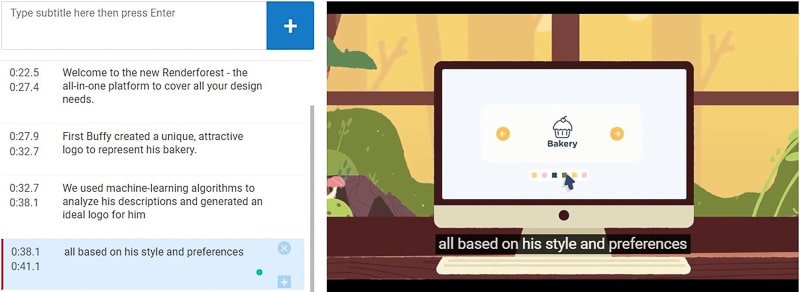

If your site hosts videos on a native video players, it’s important to understand what kinds of caption files are compatible with the different video players. sbv, oh my! What Kinds of Captions to Use on Native Video Players? Here’s a really handy YouTube Caption Tutorial.scc. Upload a Caption Text File: Users may caption the YouTube Video via a captioning software, such as MovCaptioner ().Think about the interview transcriptions, there’s plenty of them and no reason to not upload that as a text file to YouTube and have captioning quickly made available! This is undoubtedly the fastest way to get captions on a video up and ready.

Fastest way to add subtitles to video trial#
See how the first example “flows and breaks” more naturally? Whereas the second example seems really interrupted? It will take a little bit of trial and error for you to “catch on” and get the hang of it. We went to the store and bought ice cream and pretzels, but we didn't have enough money to pay for them. You may be wondering, as you create the caption tracks, the best way to “time” them – i.e, when do you start a new line, when do you add a period, or punctuation marks? You want the context to stay together as much as possible, so that when viewed together on the screen, the user has an understanding of what is said and can read along without having to “think.” For example: Effective: Here’s an overview of how Universal Subtitles work. There’s a slight learning-curve, but once you get it, it’s surprisingly easy to caption.

It hits the “three reasons to captions” as mentioned above. Not only that, it enables multiple caption tracks to a video, so that it can also include foreign language translations. It’s a free, open-source tool that allows anyone to collaborate and “co-caption” a video to make it more searchable and accessible to users. One service that I would like to point out is Universal Subtitles. Have a video already posted online, but doesn’t have captions? In most cases, that should be okay and you can still add captions. The website still carries the responsibility of ensuring video accessibility, so it’s important to understand options for captioning content online, and the rest of this post outlines cost-efficiencies and time-saving techniques for captioning online video. This includes instances when videos may be hosted on third-party services, such as YouTube. Websites that are required to be Section508 compliant to make the content accessible to people with disabilities carry the responsibility of ensuring video accessibility. When you have a caption track, you are usually able to have access to the source language file, which you can use to get translated and include an optional foreign language subtitling for users who may not speak English. When you provide a caption text file as part of the video, search engines are able to index the caption files and search for the terms that the user has entered, thereby boosting the search ranking opportunities. Why should you do it? Here are a three reasons why: 1. Long assumed highly-specialized or proprietary, closed captioning is now easily accessible for us to add to videos, even after the video has been produced. At age twelve, I knew this wasn’t right, and since then I’ve been an advocate for getting online content captioned. I searched message boards everywhere to find out why I couldn’t turn on the captions, and it was confirmed that the captioning functionality simply had not been added to online video.

One of the first things we did was go to CNN.com to watch a video, and being the one who is deaf, I looked for the closed captioning button on the video player. I thought I was in an episode of The Jetsons. It offered fast-enough speed to play video online. I remember this day like it was yesterday: it was 1995 and I was in middle school when my dad brought home the latest, hottest desktop computer on the market, coupled with a compatible super-fast dial-up modem.


 0 kommentar(er)
0 kommentar(er)
